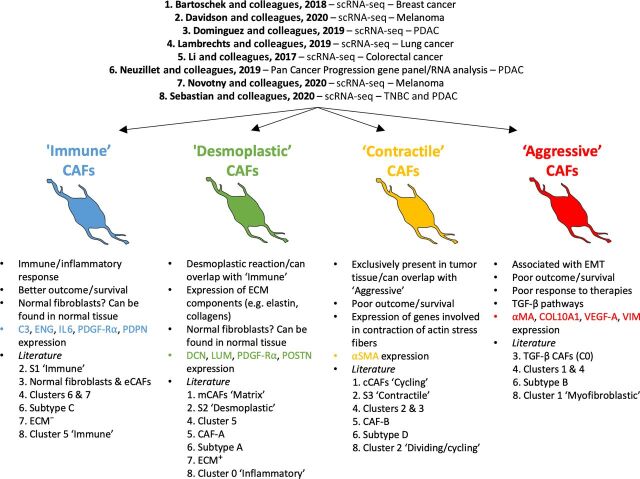Figure 3.
Proposed subpopulations of CAFs. The figure displays 4 broad subpopulations of CAFs in the TME as extracted from the literature: Immune, Desmoplastic, Contractile, and Aggressive. The immune and desmoplastic populations tend to be tumor inhibitory while the contractile and aggressive are more tumor supportive. The ‘immune’ subpopulation is associated with C3, ENG, IL6, PDGF-Rα, and PDPN expression. The ‘desmoplastic’ subpopulation is specifically characterized by a high expression of DCN, LUM, and POSTN as well as ECM components, such as elastin and collagen. The ‘contractile’ and ‘aggressive’ subpopulations are respectively defined by a high expression of factors involved in contraction of actin stress fibers or cell cycle (‘contractile’) and high expression of markers associated with EMT, such as vimentin or VEGF-A, or the TGF-β pathways (‘aggressive’). Both show the highest expression of α-SMA and are linked to poor patient survival/outcome. The studies used to highlight the existence of these broad CAF types are listed on top.

